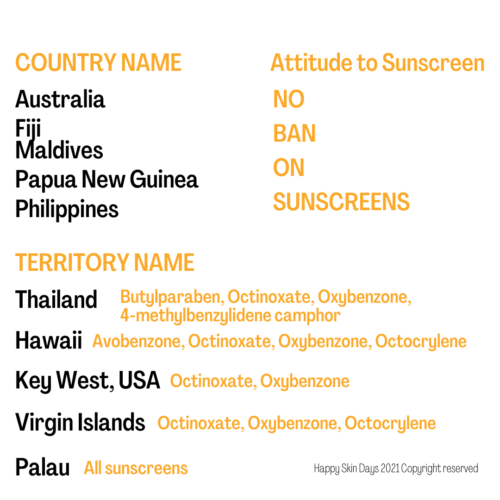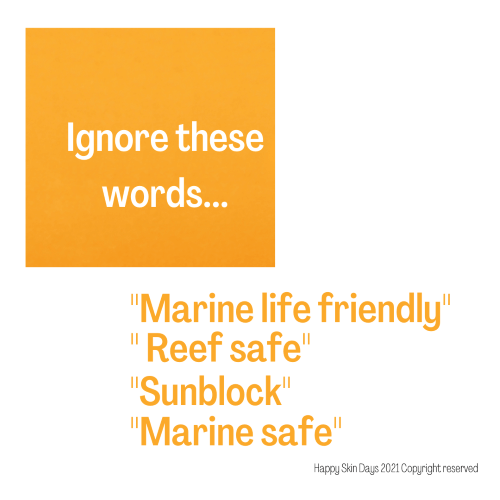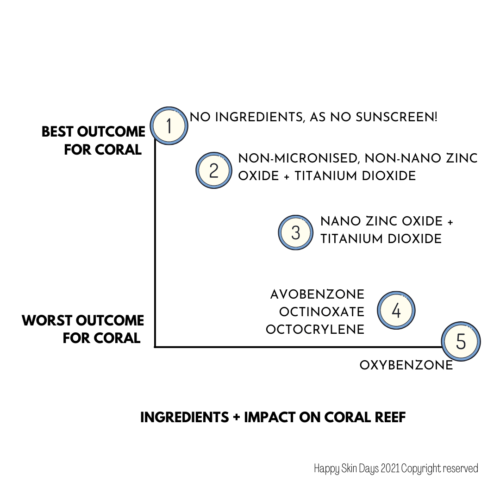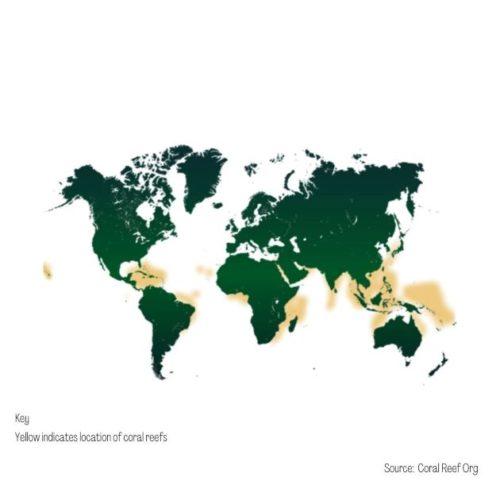Which countries ban sunscreens?

I can only name one country that bans ALL sunscreens, and all other countries ban some ingredients.
The above list is only some territories who’ve adopted some type of position on sunscreens
All other countries (including Australia down to Papua New Guinea, which host most of the globe’s coral reef) permit sunscreen use, irrespective of the ingredients contained.
What is coral reef safe sunscreen?
Like most of sunscreen regulation everywhere, there is no agreed upon definition by manufacturers or governments on what “reef safe” is.
When you see the following words on a sunscreen, I’d like you to ignore them. Why? Unscrupulous manufacturers are still going to call something reef safe for a quick buck.

How to buy reef safe sunscreen?
Given there is no agreed upon definition, you need to decide what your attitude to marine life, especially coral is is and appreciate that some choices are better than others…
Here is a little graph to help you

In descending order of preference (if you are a coral reef)…
- No sunscreen, skincare or hair products
- Normal Zinc Oxide, Titanium Dioxide sunscreens without parabens (especially butyl, but including methyl-, ethyl-, butyl-, isobutyl- as preservatives)
- Micronized or Nano Zinc Oxide and/or Titanium Dioxide sunscreens
- Other nanomaterials, such as new sunscreen filters:
- MBBT (Methylene bis-benzotriazolyl tetramethylbutylphenol)
- BEMT (Bis-ethylhexyloxyphenol methoxyphenyl triazine)
- Sunscreens containing Avobenzone, Octocrylene and Octinoxate
- Dreaded Oxybenzone
Names of filters on sunscreen labels
I’ve used common names but the INCI name is what is usually published outside the USA as follows:
- Avobenzone (INCI is Butyl methoxydibenzoylmethane)
- Octinoxate (INCI is Ethylhexyl methoxycinnamate or Octyl methoxycinnamate)
- Oxybenzone (INCI is Benzophenone-4)
